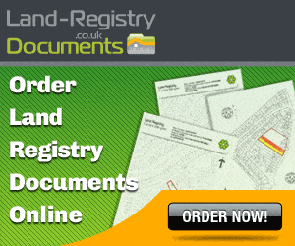Now that you have onboarded the client and carried out due diligence checks you can carry out the substantive work on the matter. For information on the onboarding process please select "Client Onboarding" from the top menu.
Sales Particulars
You shoould obtain a copy of the sales particulars from from the estate agent (not merely the memorandum of sale). This may contain information about the boundaries, off site parking, works to the property etc and should be considered against the title documents provided by the seller's solicitors, the seller's replies to the property information form and any valuation or survey report with which you are provided. In the event of any issues post completion you will be expected to have been aware of any relevant matters revealed in the particulars and may be considered negligent if your clients suffer loss as a result of something in them that you ought to have advised upon.
The Contract Pack
Before starting any substantive work on a purchase matter you will need to be in receipt of the contract papers, or contract pack, from the seller's solicitor. The pack will typically include:
- a draft contract;
- official copies of the register of title and title plan (or epitome of title for unregistered land);
- official copies of any documents referred to in the register such as conveyances or transfers or a lease; and
- Protocol forms (Sellers Property Information Form (TA6), Fixtures, Fittings and Contents Form (TA10) and if leasehold, Leasehold Information Form (TA7))
If the seller is someone other than the registered proprietor, such as a mortgagee in possession, receiver, personal representative or trustee in bankruptcy then it's unlikely that protocol forms will be supplied.
Conveyancing Searches
You will usually need to order a set of searches against the property address, using the title plan to show the extent you wish to search. These will include a Local Authority Search (which is made up of a CON29R, LLC1 and sometimes CON29O additional enquiries), Drainage and Water Search and Environmental Search plus any location specific searches such as Coal Mining, Tin Mining, Flood etc. These can (in the case of the local, drainage and if applicable coal searches) be obtained directly from the relevant authority ("official searches") or else via a private agency that inspects the authority's records ("personal searches"). Some mortgage lenders will only accept official searches and if your client is obtaining a mortgage you will need to check that before ordering.
Checking the Title
You should review the contract papers alongside the sales particulars, client instructions, search results and if applicable, valuation/survey. You should check that the property detailed in the contract and title is the full extent of what your client expects to acquire, as far as you can ascertain. You should note anything that might be relevant to your client and when assessing that you should consider your client's motives for purchasing the property, for example if it is a buy to let, are there any covenants that might prevent letting? If your client intends to extend or devlelop will they be allowed to do that?
You should check for any works that have been done that might have needed planning consent, covenant consent or building regulations approval and check whether these are in place. You should make sure any documents referred to in the title are supplied and that the seller appears to be the owner of the property (or has capacity to sell) as well as looking for any restrictions and charges etc.
The search results should be reviewed to check that the roads and drains are adopted and that there are no local land charges that need to be resolved and so on.
Raising Enquiries
Having reviewed the contract papers and other documents the next stage is to raise enquiries of the seller's solicitors. Enquiries should be raised in respect of any issues on the title that will need to be resolved, any anomolies and to clarify any information provided by the seller. Your client may also want you to query something.
Mortgage Offer
If your client is buying with the aid of a mortgage (and assuming you are acting for the lender) you'll need to review the mortgage offer and arrange for your client to sign the mortgage deed. Whilst you are not expected to provide your client with financial advice, you should explain the implications of taking a mortgage and the consequences of defaulting.
Reporting to the Client
Once you have reviewed the contract pack and search results, raised enquiries and checked the replies you will need to report to your client. The report should explain the title including any rights and covenants. It should include a copy of the title plan and should ask the client to check it against the physical boundaries. Any issues revealed on the searches or protocol forms should be explained and it is sensible to provide general information about the exchange and completion process. A draft invoice and completion statement should be provided so that the client understand the amount they will need to pay over.
Exchange and Completion
Assuming the client has confirmed they are happy with the report and has paid over the balance required and has signed the contract, transfer and mortgage deed it's time to arrange a date for completion. Once a date is agreed contracts can be exchanged. At this point the purchaser is legally bound to complete and the date for completion is fixed. On completion the funds are paid over to the seller's conveyancer (less any deposit paid on exchange). The seller will then hand the keys into the estate agents from where the buyer will collect the keys.
Post Completion
After completion you will need to submit the SDLT return to HMRC within 14 days (England) or else submit the LTT return to WRA within 30 days (Wales), register the legal charge at Companies House if the buyer is a company (and has taken a mortgage) within 21 days and submit an application to HMLR within the priority period afforded by the OS1/2.


